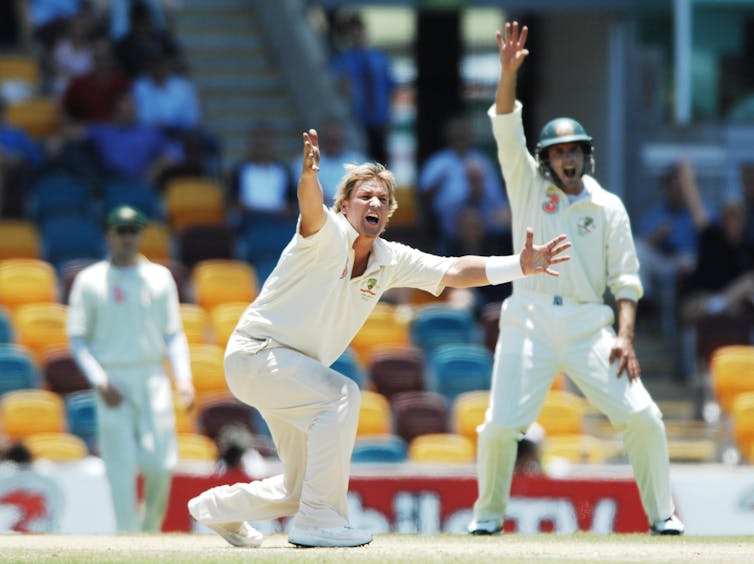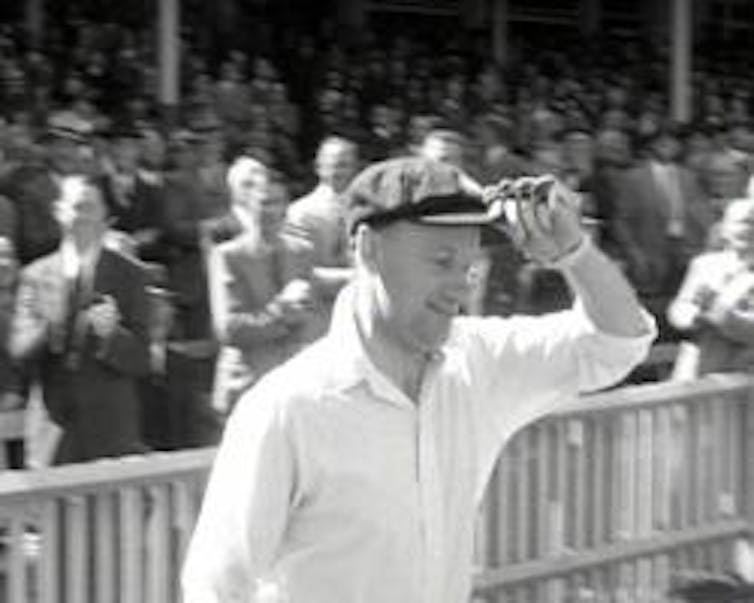Pure box office, pure genius, was how former England cricket captain Nasser Hussain summed up the late, great Australian bowler Shane Warne, who died unexpectedly at just 52.
But limelight is illumination of the most unreliable kind, I noted at the beginning of The Private Don, my book on the inner life of Australia’s peerless batting genius Don Bradman.
Though Bradman and Warne had strikingly different attitudes to public attention, there was more to both their lives than the limelight revealed.
Warne used it like a nuclear reactor uses uranium: it fuelled him. We gave him our attention. In exchange, he shared an exhilarating intensity and appetite for life that riveted us for years.
The combination of Warne’s libido and laser-like focus was compelling. The libido made him relatable. Only the unworldly could find no empathy for, and occasional vicarious pleasure in, Warne’s hedonism, in which misogyny was notably absent.
The laser-like focus gave us the most thrilling individual sporting performances we will see in our lifetimes. The excitement it generated was contagious among the cricket-indifferent and cricket-lovers alike.
Millions of conversations around the world between people swapping stories about Warne since his death included this with a cricket-indifferent corporate lawyer. She recounted being at a test match at the MCG one day as her cricket-buff husband’s “handbag”. Warne put on a star turn and, she said, “Melbourne exploded”. She did too. It was ecstatic.
This was quintessentially to do with Warne, not just his bowling. Australia’s current top spinner, Nathan Lyon, is an extraordinary third on the ladder of most wickets taken in Australian cricket, behind only Warne and Glenn McGrath. As good as Lyon is, the cricket-indifferent likely have never noticed him and never will.
And as much as people go on about Warne’s larrikinism, it was the mesmeric intensity with which he pursued his quarry that dominated as I thought about him over the weekend. He had a super-human stillness that demanded and commanded attention as he hauled the wickets in.
This was both his big cricket brain at work as well as a visceral understanding, shared by top politicians, that combining effective theatre with the substance of one’s performance maximises success.
This was central to Warne’s later career as an elite poker player, too, where the “poker face”, and well-timed and convincingly executed bluff, are essential tools.
Here is the paradox of Warne: that someone loved for his authenticity was so good at the mask, one he curated literally as well as figuratively. There was plenty of cosmetic “work” and hair loss treatment in his attempts to keep time at bay.
Warne’s nonchalant waving away of problems in public was put down to an ability to compartmentalise. But this is just another way of saying he could give himself over totally to, and deliver, the performance required in the moment.

On the eve of his death, he shifted gear, letting the public into more of the complications of his large life, including in relation to his family and his body, via the documentary Shane.
This was presaged by an Australian Men’s Health magazine joint interview a few months earlier with Warne and his son Jackson.
“Now, people can take the mickey out of me,” he said. “They can do whatever they like. They can call me vain because it doesn’t worry me in the slightest. Because in my mind it’s always been look good, feel good.”

Superficially, the body preoccupation did not seem obsessive. “Not everyone should worry about their weight – they should worry about feeling good,” Warne sensibly said. “But, for me, mate, I look at a cheeseburger and put on three kilos, whereas I know other people can have five of them and nothing happens.”
But one didn’t have to read between the lines to work out the issue was more significant than this. “(If) I’m quite strict with my diet and I combine that with my fitness routine, I’ll be fine,” Warne said, vocalising the unbidden thought track in the heads of most Australian women as well as many men.
The unspoken question was, of course, whether the public adoration (and Tinder success) would continue if Warne’s weight blew out. For very sad reasons, this is a worry no more.
The most tender part of the interview concerned the impact of cricket as then played, with long months away from family, on him and them, along with the limelight’s particular effect on son Jackson, now 22. (Daughters Brooke, 24, and Summer, 20, are mentioned but presumed to have escaped the gendered impact of being a famous man’s child.)
This was a worry for Don Bradman, too, who was close to daughter Shirley but struggled to help his depressed son John. Bradman was devastated when John changed his name to “Bradsen” to escape the burden of others’ expectations.

Unlike Warne, who began to open up before his death, Bradman remained silent on this all his life, except in correspondence with close friend, Australian journalist Rohan Rivett. John’s depression was “the supreme tragedy of my life for I seem so powerless to help,” Bradman told Rivett.
Asked whether he felt his father’s “long shadow”, Jackson Warne commented that the “shadow is quite warm [… and] you can have a lot of fun in the shadow.” Australian Men’s Health magazine’s description of Jackson as “sensitive, self-contained and likeable” hints, however, at the weight of masculinist expectations on the young man’s shoulders, as does the list of sports he tried and failed to shine in before finally finding salvation in the gym.
Like Bradman, Warne’s star will shine on. Unlike Bradman, Warne had begun using the limelight to work through his life’s complications. We will understand him better over time than we ever really did The Don.![]()
Chris Wallace is an Associate Professor, 50/50 By 2030 Foundation in the Faculty of Business Government & Law at the University of Canberra.
This article is republished from The Conversation under a Creative Commons license.
Read more stories from The Latch and subscribe to our email newsletter.







